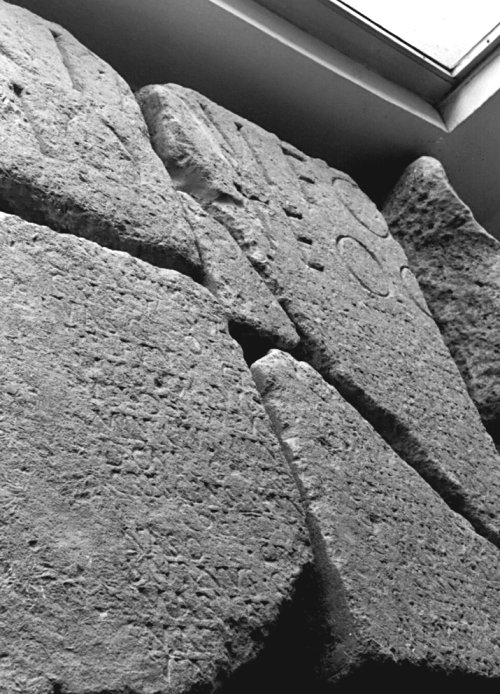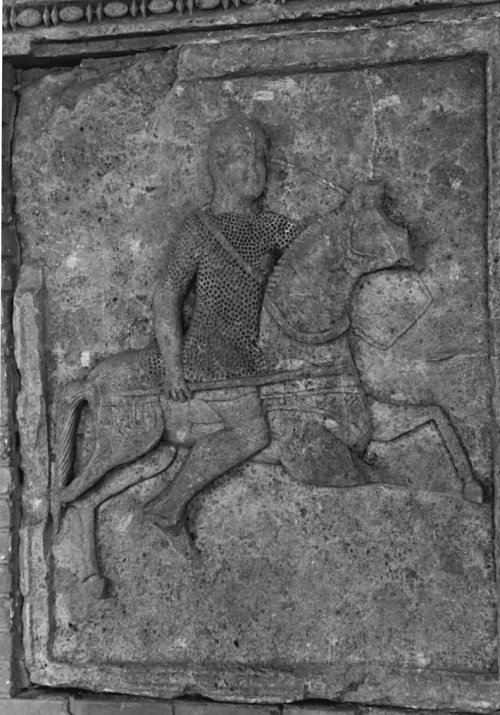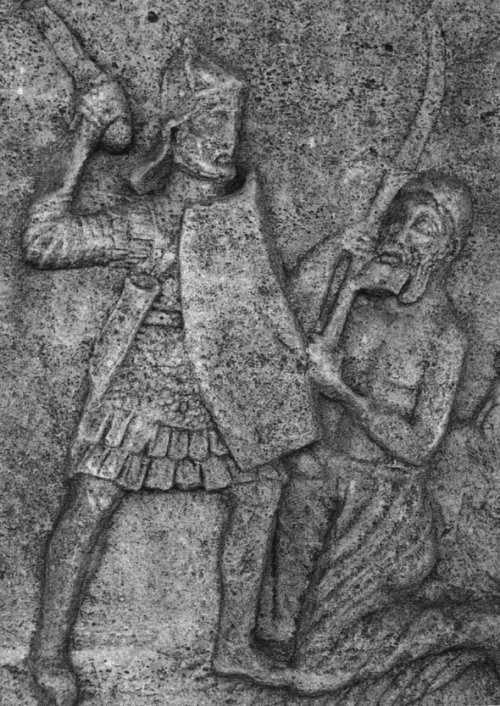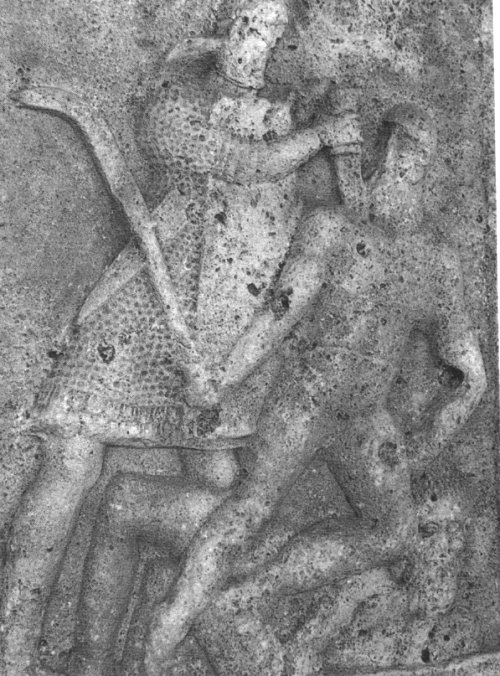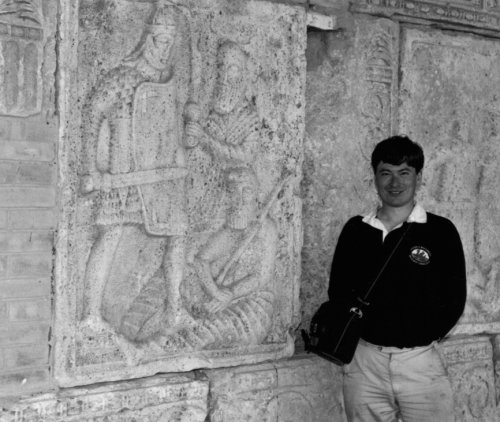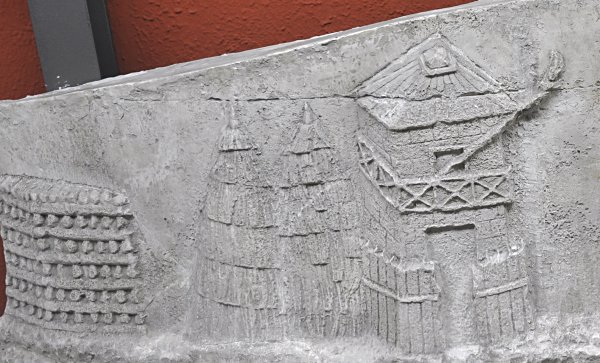

Roman Fiction
Ferox returns in:-
THE FORT
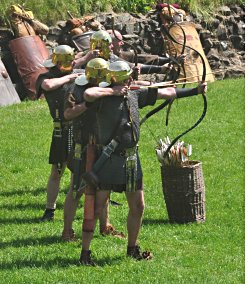
THE FORT is my latest novel, following on from the Vindolanda Trilogy. While it involves many of the same characters, it should stand alone and a reader does not need to have read the earlier stories to enjoy it. Those who have will hopefully enjoy meeting again some old and familiar friends.

Flavius Ferox one-time regionarius (or regional centurion) at Vindolanda remains our central character, but is no longer in Northern Britain and instead finds himself sent off to the Danubian frontier. Trajan's First Dacian War is over, but more trouble is brewing, and Ferox and friends find themselves in an isolated fort beyond the Daunbe. He is in command of an irregular unit of Brigantes, many of them not pleased to be conscripted and even less keen on their new commander. One of the ideas behind the book is to consider what it may have been like for Britons to be sent off to other parts of the empire. With the Dacian kingdom, we also have a strong and independently minded state with its own culture, and lots of peoples living alongside it, such as the nomadic Sarmatians.
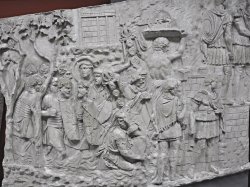
The Vindolanda stories are essentially Westerns, just set around the year AD 100 in Northern Britain. The Fort takes us to another frontier where different cultures meet, and for a change some of the story is told from the other side, as we follow Brasus, a young Dacian nobleman, and get some sense of his culture and the politics of Dacia. Its an adventure story, but I have done my best to make the setting and action as realistic as possible.
From the dust jacket:-
AD 105 Dacia: The Dacian kingdom and Rome are at peace, but no one thinks that it will last. Sent to command an isolated fort beyond the Danube, centurion Flavius Ferox can sense that war is coming, but also knows that enemies may be closer to home.
Many of the Brigantes under his command are former rebels and convicts, as likely to kill him as to obey an order. And then there is Hadrian, the emperor's cousin, and a man with plans of his own....
Gritty, gripping and profoundly authentic, The Fort is the first book in a brand new trilogy set in the Roman empire from bestselling historian Adrian Goldsworthy.
Introductory VIDEO to 'The Fort'

Released 10th June 2021 in the UK and August in the USA
For publicity enquiries in the UK contact:- laurentavella@headofzeus.com
For publicity enquiries in the USA, contact:- katelynn@kayepublicity.com
To enlarge click each of the pictures.
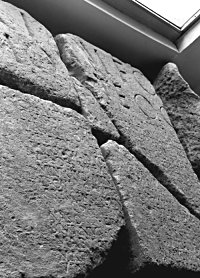
Fragments of the memorial at Tropaeum Triani (modern Adamklissi in Romania) which originally listed the names of over 3,000 Roman soldiers. Although we cannot be certain, these men fell in one or more of the conflicts with Dacia under Domitian or Trajan.
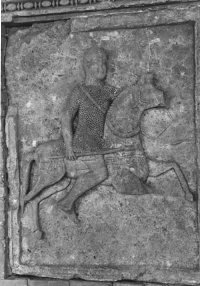
Another of the monuments at Adamklissi was decorated with metopes (sculpted scenes) depicting scenes from one of the campaigns. The style is less sophisticated than Trajan's Column, reminiscent of reliefs on military tombstones, and includes many details reflecting local equipment. This trooper carries a shield that is hexagonal rather than the oval pattern uniformly seen on Trajan's Column.

Legionaries on the Adamklissi reliefs wear mail or scale cuirasses, but never the segmented armour of Trajan's Column. Many also have added protection for their right arm and greaves protecting the lower leg. In this scene a legionary prepares to cut at a kneeling barbarian, who is wielding a falx, the two handed, scythe like sword employed by the Dacians and other peoples of the region. This man may wear a skull cap, but others on the monument have hair tied into a side-knot and are probably Bastarnae, a tribe Tacitus considered to be Germanic.
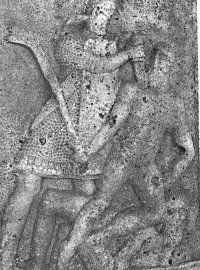
Another legionary stabs an opponent, using his gladius sword like a dagger it is clear in the original that his thumb is pointing upwards, contrary to a claim I made in my doctoral thesis, written before I had visited the museum.
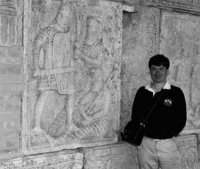
The author (or at least how I looked a couple of decades ago) visiting the excellent museum at Ad amklissi. Behind him is another of the metopes, the legionary in this one using his gladius for an under arm thrust. Although Roman authors stress the advantages of thrusts over cuts, soldiers were trained to employ both.
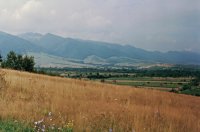
A view of the Carpathians, the mountains that shielded the Dacian kingdom.
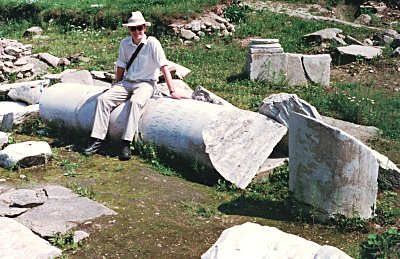
Adrian at Sarmizegethusa Sitting in the Forum at Sarmizegethusa Ulpia, founded as the capital of his new province by the Emperor Trajan after his conquest of Dacia, and probably an army base at the time of our story.

The Danube Bridge depicted on Trajan's Column. The reliefs contain many details, sometimes scaled down in size, but this conforms closely to the description given by the historian Dio Cassius.
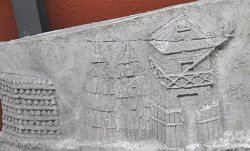
The scenes on Trajan's Column begin with depictions of the watch towers and fortlets along the Danube.

One striking scene on Trajans Column shows Dacians using a battering ram against a Roman fort. It was rare for the Romans to be confronted with any form of siege engine, but the Dacians were a far more sophisticated opponent than other European peoples.
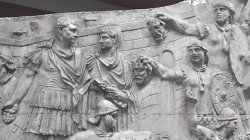
Several scenes on Trajan's Column depict heading hunting by auxiliary soldiers. On two occasions, they present the trophies to Trajan, who shows every sign of approving.
